Remembering the Perth Courier, out of print after nearly 2 centuries
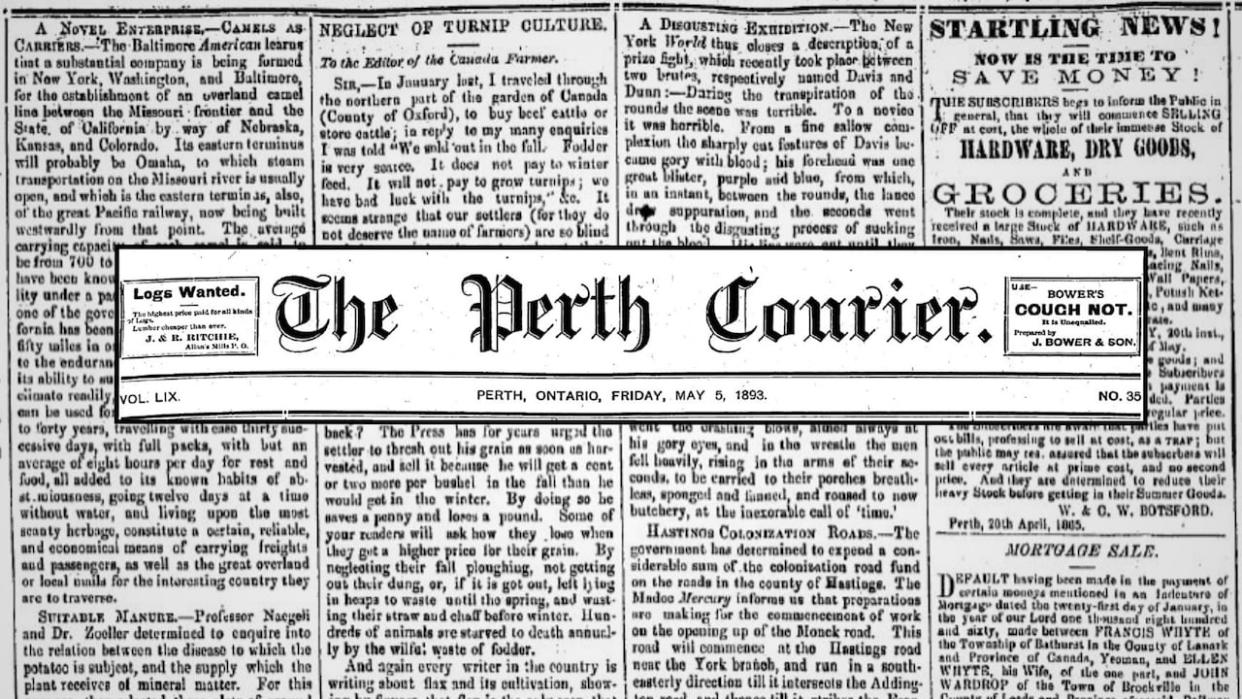
A column in the local newspaper in Perth, Ont., warns about "young bucks" who race through town at a "furious pace," risking the lives of pedestrians.
The complaint, unlikely though it may seem, has nothing to do with cars.
Published in 1866, the anonymous column expected a "serious calamity" would "no doubt" occur if reckless drivers couldn't rein in their horse and buggy.
The story and countless others — published over nearly two centuries in the pages of the Perth Courier — now live on rows of shelves at Archives Lanark, housed in the offices of the former Township of Drummond, about 80 kilometres southwest of downtown Ottawa.
The archived newspapers hold snapshots of Perth history, from warnings about an advancing cholera outbreak, to a lament about the decline of "turnip culture," to a barrage of ads peddling "victory bonds" during the Second World War.
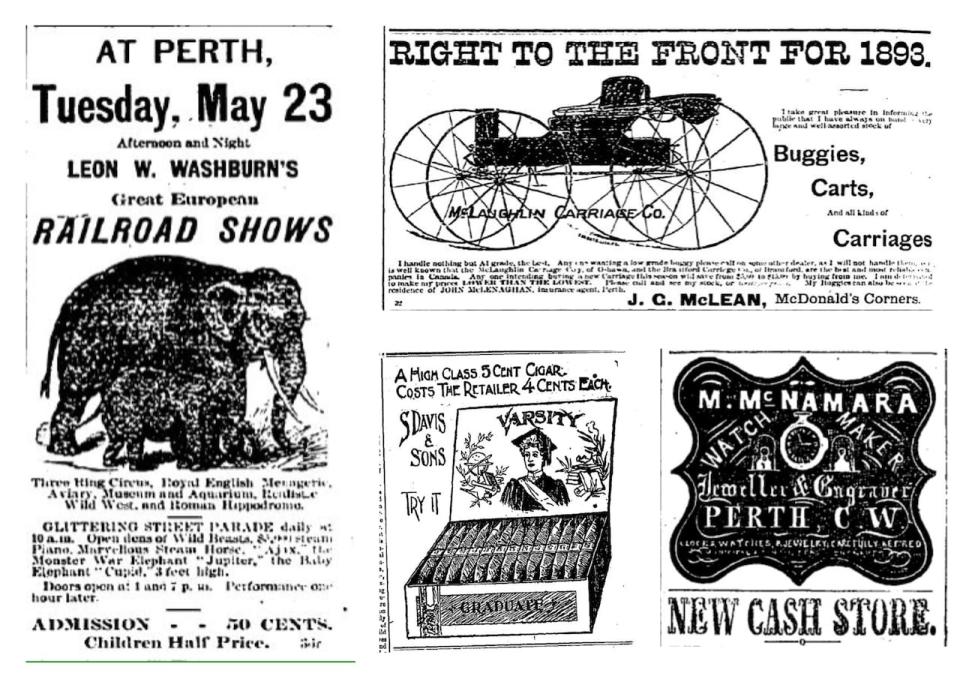
A collage of assorted ads from digitized copies of the Perth Courier. (Perth Courier)
Copies of the Courier at Archives Lanark had steadily accumulated, one week at a time, since the newspaper was first published in 1834.
Then, a few weeks ago, that stopped.
On Sept. 15, Toronto Star sister company Metroland Media Group announced it had sought bankruptcy protection and was laying off dozens of journalists and shutting down print operations at 70 of its community newspapers.
Something about sitting down and reading a newspaper. - Judy Brown, Mayor of Perth
In the Ottawa area, that meant the loss of paper copies of the Kemptville Advance, the Renfrew Mercury and the Perth Courier, each among the country's oldest newspapers.
"We're all devastated," said Marilyn Snedden, vice-chair of Archives Lanark. "It's just another sign of real changing times."
Unlike the nearby independent Glengarry News, which recently shuttered both its print and digital publications, the Metroland newspapers continue to exist as part of the Inside Ottawa Valley website.
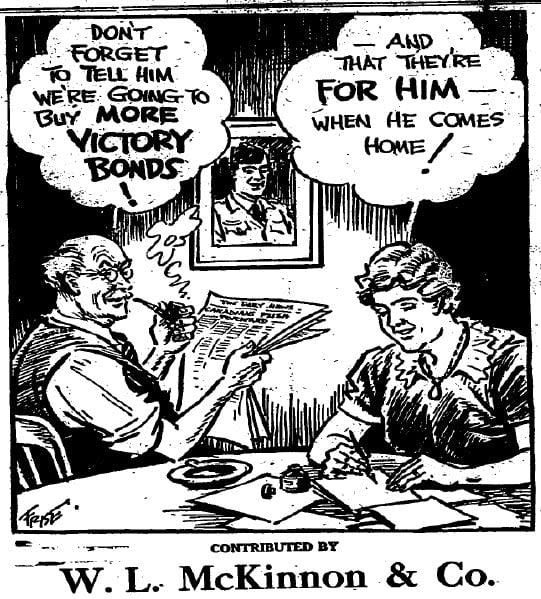
A 'victory bonds' cartoon published in the Oct. 23, 1943 issue of the Perth Courier. (Perth Courier)
But that coverage, according to Snedden, is "no comparison at all" to the number of local stories that once made it to print.
Perth Mayor Judy Brown said she felt a "sense of loss" when she learned the print paper had come to an end.
"Sort of like losing an old friend," she said. "It's always been around. I was shocked when I found out."
Brown used to work for the Courier, but left after Metroland Media bought the newspaper in 2006. She said the end of the print edition comes after a gradual decline in local content, written by a dwindling pool of local reporters.
"To some extent, it takes away from the sense of community," she said. "[There's] something about sitting down and reading a newspaper."
The following three stories, each pulled from the Courier's digitized archives, capture a glimpse into the town's history.
The ghost house
On Jan. 13, 1935, "upwards of 100 autos" descended on a house near the outskirts of Perth, the drivers hoping to glimpse any of the "weird and mysterious incidents" recently reported there.
According to a story in the Courier later that week, "a profound sensation" had spread from the small log house located in present-day Tay Valley Township across "the length and breadth of Canada."
Widespread newspaper coverage and a CBC Toronto radio broadcast helped generate interest in a series of strange incidents said to be taking place at the Quinn family home.
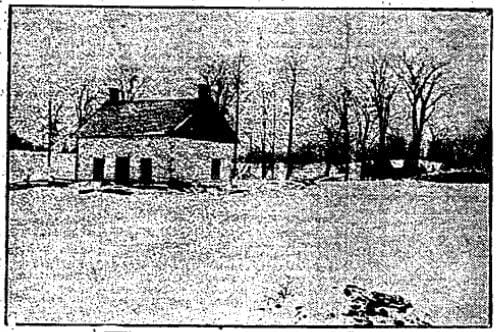
An image of the Quinn house near Perth from the Jan. 25, 1935 copy of the Courier. (Perth Courier)
The list in the Courier included stove lids that danced in the air, windows smashed by levitating stones and three flat-irons that walked step-by-step down the stairs.
"Another visitor was struck in the back of the head by a clothespin," the newspaper reads.
Ontario Provincial Police (OPP) deemed the reports credible enough to send two officers to the premises.
The Courier described the scene at the house on a night when attention had reached a peak.
"The room was lit by a kerosene lamp. The men were in small groups all talking in low voices as at a funeral," the paper reads.
By around midnight, a police officer and his companion were the only people still awake on the main floor, according to the Courier, while two neighbours of the Quinn family kept watch at the door.
"Outside the house the mercury slipped below zero, and the little house with broken windows was very cold," the story reads. "Still nothing happened."
And still less about the supposed haunting reached the pages of the Courier — until decades later when the house reappeared on the front page.

A clipping from the Jan. 6, 1972 issue of the Courier describes the razing of the former Quinn house. (The Perth Courier)
On Jan. 6, 1972, the newspaper reported the former Quinn house had been razed to the ground in a mysterious fire.
Although the mystery of who did it remained unsolved, by then, a clearer understanding of its haunted past had emerged.
Two months after the reports of smashed windows and animated flat-irons, Perth OPP had arrested the eldest Quinn boy in connection to an unrelated arson case.
The boy was charged for the crime, and he admitted during questioning he'd been the "ghost" of the home months earlier.
"At the time many people felt that the boy created the 'ghost' to help his mother who wanted to move from the area," the paper reported, "while the father was content to live in the home."
The 'Corporation Baby'
In the 1860s, infants were often abandoned on stoops across town.
With no firm policy to deal with the problem, council resorted to ad hoc measures for at least one abandoned infant, referred to in the Courier as the "Corporation Baby."
In May 1865, council granted $5 to a widow identified as Mrs. Smith for taking care of "the foundling child left with the Market Clerk some time ago."
"There are few in town, we think, who will begrudge Mrs. Smith the small pittance she received for all her trouble," the paper reads.
But just one month later, the newspaper discussed how some members of council had begun to begrudge the expense. It described local politicians as being "in a state of perplexity about the disposal of the baby."
"Most of the family men among them seem to think that the poor little lump of humanity should be provided for in some way at the public expense," the story reads.
"While the bachelors … grumble at the cost, and darkly hint at something that sounds like sending the youngster away."
The newspaper proposed the council levy a tax on all unmarried men in Perth over the age of 25 to help support the abandoned children.
Eventually, for the price of $25, a resident agreed to take ownership of the Corporation Baby until she reached adulthood. What happened to her, however, appears to be lost to history.
The mammoth cheese
A newspaper advertisement in the Perth Courier marked the impending World's Columbian Exposition, a fair held in Chicago in 1893.
"The World's Fair. Are you going?" the ad asks. "The Grand Trunk R. R. issue tickets from Perth to Chicago at lowest rates."
For those who went, the Canadian cheese exhibit was a key attraction. The centrepiece: a "Mammoth Cheese" weighing roughly ten tonnes and measuring about two metres tall and more than eight metres around.
Made in Perth, the cheese reportedly contained a single day's milk from 10,000 cows. Twelve of the largest cheese factories in Ontario contributed curd.
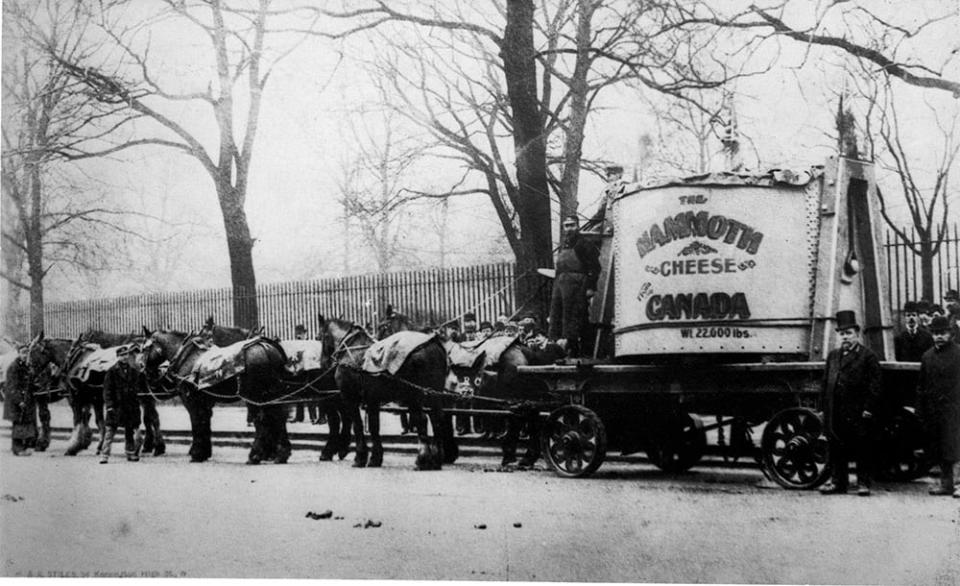
'The Mammoth Cheese' leaves Perth en route to the 1893 World's Columbian Exposition in Chicago. (Beckett, Donald C./Library and Archives Canada/PA-160538)
A series of breathless dispatches from Chicago appeared in the Courier — many describing the cheese in minute detail.
"It is encased in a vat of riveted steel boiler plate, and this boiler plate rides on a wide-wheeled truck," one story reads.
"The smell of cheese is plainly discernible when near by," reads another. "The crowd always congested here when the huge cylinder of cheese and its labelling met the eye of the wandering visitor."
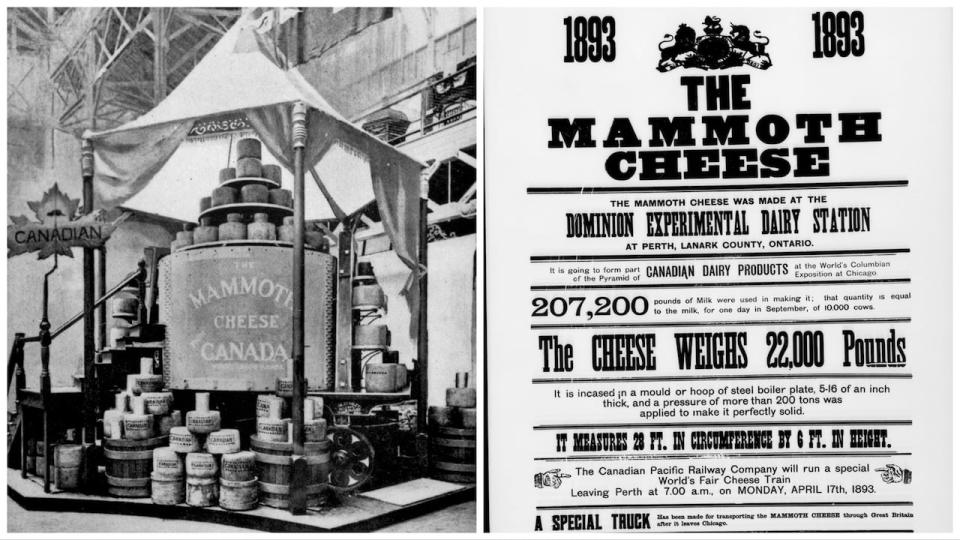
The cheese display in Chicago shown next to a poster advertising the cheese. (Beckett, Donald C./Library and Archives Canada/PA-160538/Library and Archives Canada/PA-160539)
The newspaper described how a plug nearly a metre long was bored out of the cheese and inspected by judges, eventually earning a score of 95 points out of 100.
"The texture was exceedingly good," the reporter wrote. "The flavor was a little sharp and biting, but wonderfully fine, all things considered."
On Oct. 23, 1943, the newspaper covered a ceremony in Perth unveiling a concrete replica of the giant cheese for the 50th anniversary of the original delicacy.
More than 50 years later and the cheese monument remains — its history remembered in archived copies of the Perth Courier.


